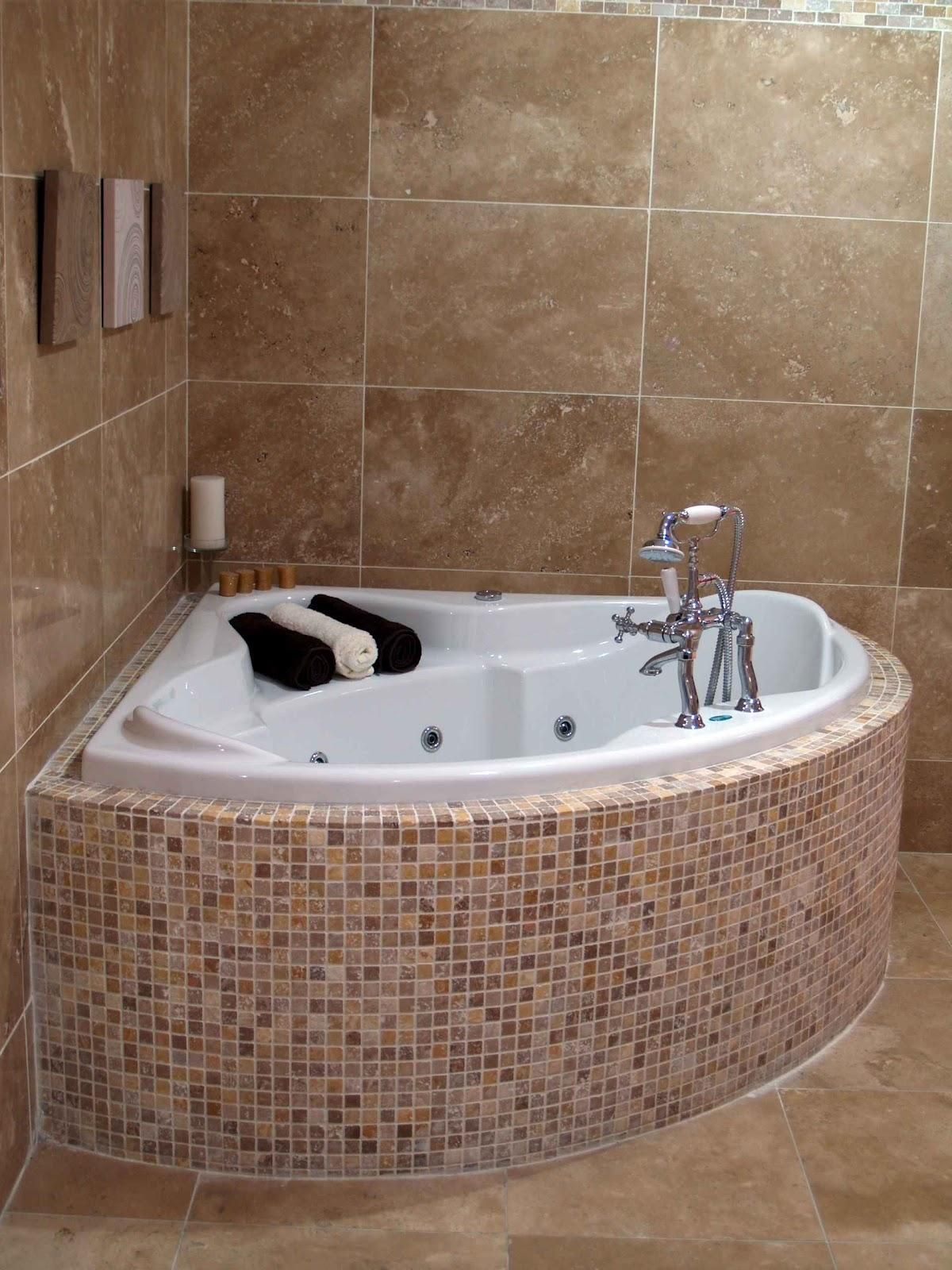Unlocking Bathroom Bliss: Choosing the Right Tub for a Small Space
Dreaming of a luxurious soak but convinced your small bathroom can’t handle it? Think again! With the right small bathtub, you can transform your compact bathroom into a relaxing oasis. This comprehensive guide will walk you through everything you need to know about small tubs, from different types and materials to space-saving tips and budget-friendly options.
Exploring Your Small Tub Options
Believe it or not, your small bathroom doesn’t limit your tub choices as much as you might think. There’s a surprising array of small tubs designed specifically for compact spaces. Let’s dive in:
-
Freestanding Tubs: These elegant tubs stand alone, adding a touch of sophistication. While they can be space-savers, careful planning for plumbing placement is essential. Freestanding tubs often shine in slightly larger small bathrooms, as they need some breathing room to truly stand out.
-
Alcove Tubs: The classic, budget-friendly choice, alcove tubs fit snugly within three walls, creating a defined bathing zone. They’re excellent for maximizing space in narrow bathrooms.
-
Drop-in Tubs: These tubs offer a custom look, installed within a framed enclosure. If you’re aiming for a specific aesthetic, drop-in tubs could be a good fit, but be prepared for potentially more involved construction.
-
Corner Tubs: Have an awkward corner begging for purpose? A corner tub could be your answer, transforming that unused space into a bathing haven.
-
Japanese Soaking Tubs: Craving a truly immersive bathing experience? These deep, compact tubs are ideal. Designed for a comfortable upright soak, their smaller footprint makes them perfect for small bathrooms.
-
Walk-in Tubs: Prioritizing accessibility? Walk-in tubs are game-changers. Featuring a door for easy entry and exit, they make bathing safer and more comfortable.
-
Folding Bathtubs: For the ultimate space-saving solution, consider a folding bathtub. These portable tubs can be stored away when not in use, freeing up valuable floor space. They might not be for everyone, but in extremely small spaces, their convenience is unmatched.
Choosing the Perfect Material
Once you’ve narrowed down your tub type, it’s time to consider materials. Each has pros and cons:
| Material | Pros | Cons |
|---|---|---|
| Acrylic | Lightweight, durable, affordable, retains heat well | Can scratch more easily than other options |
| Cast Iron | Extremely durable, excellent heat retention | Heavy, expensive |
| Steel Enamel | Durable, scratch-resistant, less expensive than cast iron | Doesn’t retain heat as well as cast iron or acrylic |
| Copper | Naturally antibacterial, develops a beautiful patina | Expensive, requires special cleaning |
## Sizing Up Your Space (and Your Tub)
Small tubs generally range from 48 to 55 inches in length, but you can find even smaller models for truly tiny bathrooms. Don’t forget to consider the width and depth, too! Carefully measure your bathroom and consider how much space you’re willing to allocate to the tub. Some experts even suggest making a cardboard template of your chosen tub’s dimensions to visualize how it will fit.
Key Considerations Before You Buy
Before you take the plunge, weigh these important factors:
- Accurate Bathroom Measurements: Double-check those measurements to avoid future headaches!
- Existing Plumbing: Your current plumbing might influence your tub placement options.
- Budget: Tub prices can vary widely, so set a budget before you start shopping.
- Bathroom Style: Select a tub that complements your bathroom’s overall design.
- Bathing Habits: Are you a quick shower person or a long soak enthusiast? Your bathing habits will help determine the ideal tub for you.
## Making the Most of Your Small Space
Here are a few tips for maximizing space in a small bathroom with a tub:
- Tub-Shower Combos: A classic space-saving solution, a tub-shower combo provides two functions in one.
- Corner Tub Placement: Corner tubs are champions at utilizing awkward corners.
- Wall-Mounted Storage: Keep toiletries organized and off the floor with wall-mounted shelves or cabinets.
- Floating Vanities: These vanities create the illusion of more space by showcasing more of the floor.
- Light and Bright Colors: Opt for lighter colors on walls and fixtures to make the space feel larger.
- Large Mirrors: A well-placed, large mirror can visually double the size of your bathroom.
Beyond the Basics
Choosing a small tub goes beyond size and material. Consider:
- The Emotional Benefits of Bathing: A relaxing soak can work wonders for your mental and physical well-being. Even in a small bathroom, a tub provides a dedicated space for self-care.
- Accessibility: Features like grab bars and non-slip surfaces make your bathroom safer and more accessible for everyone.
- Budget-Friendly Options: Luxury doesn’t have to break the bank. Plenty of affordable small tubs are available.
If you’re looking to optimize both space and style, consider a small bathtub. These compact tubs are designed to fit into even the tiniest of spaces, providing a comfortable and relaxing bathing experience. Pairing a small tub with a small vanity sink can further enhance your bathroom’s functionality, offering ample storage for toiletries and other essentials.
Choosing the perfect small tub is a journey, but with a little research and planning, you can create a bathing space that’s both functional and stylish. Remember, even the smallest bathroom can transform into a haven with the right tub.
Small Tub, Big Impact: What’s the Best Tub for a Small Space?
Dealing with a bathroom that’s more “cozy” than “cavernous”? No need to give up on a relaxing soak! The key is choosing the right bathtub—one that fits comfortably in your space without overwhelming it.
Just like you wouldn’t try to squeeze a giant SUV into a compact parking spot, you don’t want to force a huge tub into a small bathroom. A smaller tub that fits well will feel much more enjoyable and luxurious.
When we talk about “small bathtubs,” we’re generally referring to tubs about 20% smaller than standard sizes. But don’t let that fool you—these tubs can still comfortably accommodate most adults, and they’re a godsend for families with kids who love bath time.
Before you fall head over heels for a particular style, grab your measuring tape and figure out exactly how much space you have to play with. Consider the width and length of the tub, as well as how deep you want it to be.
Then comes the fun part—choosing the type of tub! Options abound:
- Freestanding tubs are the statement pieces of bathroom design. They look incredibly chic, even in small spaces, and can make your bathroom feel larger because they’re not tucked into a corner.
- Alcove tubs are the classics, fitting snugly into a three-walled space and maximizing every inch.
- Drop-in tubs offer a sleek, modern look and can be customized with different surrounds to match your style.
- Japanese-style soaking tubs are small in footprint but big on relaxation, perfect for those who love a deep soak.
Don’t let a small bathroom hold you back from having a bathtub you love. With a little planning and smart shopping, you can find the perfect small bathtub to transform your bathroom into a spa-like oasis.
Beyond Standard: Exploring the Smallest Bathtub Options
We’ve established that bathtubs are a fantastic addition to any bathroom, big or small. But what if your bathroom is truly tiny? What if a regular tub feels like trying to fit a square peg into a round hole? Fear not—a world of tiny tubs is out there, just waiting to be discovered.
Think of a “small bathtub” as anything shorter than the average adult height (around 6 feet). These tubs are all about maximizing space and comfort. And yes, they come in all sorts of shapes and sizes!
Why Choose a Tiny Tub?
Here’s why these pint-sized tubs are making a big splash:
- Space-Savers: They’re the Tetris masters of bathroom design, squeezing into even the tightest spots.
- Surprisingly Spacious: Don’t let their size fool you—these tubs are designed to fit regular-sized humans with surprising comfort.
- Style Chameleons: From sleek and modern to cozy and classic, there’s a small tub out there to match any bathroom aesthetic.
- Budget-Friendly: Finding a small tub that suits your budget is totally doable, with prices ranging from very affordable to more luxurious.
Tiny Tubs, Big Styles
Ready to dive into the world of tiny tubs? Here are a few popular options:
- Japanese Soaking Tubs: If you prioritize a deep soak, these tubs are your new best friend.
- Corner Tubs: Got an awkward corner in your bathroom? A corner tub is here to save the day! They’re space-saving superheroes.
- Alcove Tubs: Classic and elegant, alcove tubs fit snugly into a three-walled space, keeping water where it belongs.
- Freestanding Tubs: Yes, even freestanding tubs come in compact sizes! Add a touch of luxury and create a stunning focal point for your bathroom.
- Walk-In Tubs: These tubs prioritize accessibility and safety, with low entry thresholds and features designed to make bathing easier for everyone.
Picking Your Perfect Petite Tub
Choosing the right small tub is like finding the perfect pair of shoes—it’s all about the fit! Here are a few things to keep in mind:
- Bathroom Dimensions: Measure, measure, measure! Knowing your bathroom’s exact measurements is essential for finding a tub that fits perfectly.
- Tub Depth: If you love a deep soak, keep in mind that deeper tubs usually need a bit more space.
- Material Matters: Acrylic, cast iron, fiberglass—each material has pros and cons in terms of durability, aesthetics, and cost.
- Show Me the Money: Set a budget before you start shopping to avoid any surprises.
By carefully considering these factors, you can make a smart choice and create the bathroom of your dreams.
Small Bathroom, Big Relaxation
Small bathrooms don’t have to mean sacrificing your dream of a relaxing soak. With a little planning and the right small bathtub, you can create a spa-like retreat in even the tiniest of spaces. Happy bathing!
Minimum Bathroom Size for a Tub: Debunking the Myths
So, you’re thinking about adding a tub to your bathroom, or maybe replacing an old one, but you’re working with limited space. One of the most common questions is, “What is the minimum bathroom size for a tub?”
The truth is, there isn’t a single magic number. It’s less about the overall square footage and more about the layout and dimensions within the room. Think of it like fitting a puzzle piece into an existing frame.
The real deciding factors are the placement of other fixtures (like the toilet and sink), the swing of the door, and, of course, the size of the tub itself. You need enough room to comfortably maneuver around the bathroom and use all the fixtures without feeling cramped.
While there’s no official minimum size, let’s talk about typical dimensions. A standard tub is usually around 60 inches long and 30 inches wide. A bathroom as small as 35 square feet could likely fit a standard-sized tub if the layout is efficient. However, this is just a starting point.
If you’re dealing with a truly tiny bathroom, don’t worry — you still have options! Smaller tubs are readily available, some as short as 48 inches. That’s still plenty of room to stretch out and soak, especially if you’re not overly tall. And if you’re open to exploring custom-made tubs, you can likely find even smaller sizes to fit your unique space.
Navigating Tub Selection in a Small Bathroom
Here’s a step-by-step guide to help you choose the right tub for your compact bathroom:
Step 1: Explore Different Tub Styles
- Alcove tubs (nestled between three walls) are a popular choice for small bathrooms because they maximize space.
- Corner tubs, tucked neatly into a corner, are another great option.
- Japanese soaking tubs, while deeper, often have a smaller footprint than traditional Western-style tubs.
Exploring different styles opens up a world of possibilities, even for the most compact spaces.
Step 2: Prioritize Clearance
Ideally, you want at least 30 inches of clear space around the tub. This allows you to comfortably step in and out, makes cleaning easier, and helps avoid that claustrophobic feeling.
Step 3: Measure Carefully
Grab a measuring tape and meticulously record the dimensions of your bathroom, noting the locations of doors, windows, and existing fixtures. This will help you determine the maximum tub size that will comfortably fit.
Step 4: Account for the Door Swing
Ensure the bathroom door can open fully without banging into the tub. This might seem obvious, but it’s a surprisingly common oversight!
Step 5: Consider Other Fixtures
Think about the location of the toilet, sink, and any other fixtures. There should be adequate space between them and the tub for easy access and movement.
While there’s no hard and fast rule about minimum bathroom size for a tub, careful planning and consideration of these factors will help you find the perfect tub for a relaxing and functional bathroom, no matter the size. In fact, a smaller, well-designed bathroom can feel even more luxurious and spa-like than a larger, poorly planned one! It’s all about making the most of the space you have.
- Grass Forever in Livermore: Your Guide to Artificial Turf - April 22, 2025
- German Roaches vs. American Roaches: Key Differences and Control - April 22, 2025
- 150+ Flowers That Start With S: A Comprehensive Guide - April 22, 2025










